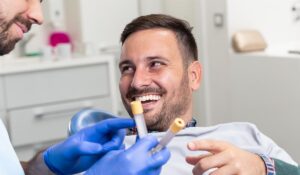Hair Trasnplantation - What to expect?
Hair transplants involve the removal of healthy “donor” hair follicles and skin from areas with dense growth, and implantation of them in areas of balding, “recipient site.” Depending on your type of hair and degree of hair loss, appropriate treatment plans can be mapped out which include a specific number of sessions. For areas with hair loss to obtain a more natural look, several hairs will need to transplanted, often thousands.
The procedure can be done on an outpatient basis and substantial changes can be noted from the first session. One session may very well be all that you need and satisfaction from just one session is normally accomplished. Hairs are usually transplanted from the back or sides of the scalp where genetically hair growth is denser and volume greater. Areas of implantation include the top of the scalp and the brow for those with receding hairlines. Hair transplants can also involve other areas such as scarred skin, arms, chest, etc.
How many grafts are usually needed?
For the front two-thirds of the scalp anywhere from around 3000 to 4000 hair grafts may be needed depending on the severity of balding. The front third of the scalp usually involves transplantation of approximately 2500 hairs, and it is important to get it right as hairs in this area cement the perception of volume.
The rear third or crown may require anywhere from 800 to 1500 hair grafts. Crowns are usually less concentrated with hair follicles so fewer hairs are required to obtain an overall natural look.
These numbers will vary as individual hair types and peculiarities always factor in.
Post-operative care involves shampooing and avoidance of direct sunlight. Hair loss after the procedure is usually normally as hair from transplanted follicles shed. New hairs take their place once the successful establishment of transplants has been accomplished.
All you want to know about PRP Therapy
All you want to know about PRP Therapy PRP, which...
Read MoreGenetic Hair Loss Medical Therapies for Men & Women
Genetic Hair Loss Medical Therapies for Men & Women We...
Read MoreBody Building & Hair Fall – Myth or Real?
Body Building & Hair Fall – Myth or Real? Bodybuilding...
Read More



